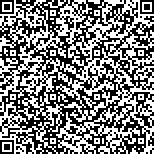| 引用本文: | 李宽意,刘正文,李传红,李艳敏,文明章.太湖椭圆萝卜螺的食物来源分析.湖泊科学,2008,20(3):339-343. DOI:10.18307/2008.0312 |
| LI Kuan-yi,LIU Zheng-wen,LI Chuan-hong,LI Yan-min,WEN Ming-zhang.Food sources of snail Radix swinhoei in Lake Taihu. J. Lake Sci.2008,20(3):339-343. DOI:10.18307/2008.0312 |
|
| |
|
|
| 本文已被:浏览 8335次 下载 3405次 |

码上扫一扫! |
|
|
| 太湖椭圆萝卜螺的食物来源分析 |
|
李宽意1,2, 刘正文1,3, 李传红3, 李艳敏4, 文明章5
|
|
1.中国科学院南京地理与湖泊研究所, 南京 210008;2.中国科学院研究生院, 北京 100049;3.暨南大学, 广州 510630;4.华中农业大学水产学院, 武汉 430070;5.南京信息工程大学, 南京 210044
|
|
| 摘要: |
| 椭圆萝卜螺(Radix swinhoei)是太湖常见螺类,能牧食附着生物与多种水生植物.对植食性螺类而言,食物的主要来源究竟是水生植物还是附着生物尚存在争议.以来自太湖的苦草、轮叶黑藻、附着生物及混合食物(苦草+轮叶黑藻+附着生物)作为椭圆萝卜螺的四组食物,通过两个月的室内养殖实验,根据椭圆萝卜螺的生长指标来分析其主要食物来源.结果表明:以苦草、轮叶黑藻为食物时,椭圆萝卜螺的成活率(成螺)、特定生长率(幼螺与成螺)均显著低于附着生物、混合食物,食物种类对幼螺成活率的影响则不显著.另外,食物种类对幼螺壳长的增长有显著影响,在牧食两种水生植物后,幼螺平均每天壳长增长在0.01-0.02mm之间,而牧食附着生物与混合食物后每天增长0.05mm以上.分析认为,椭圆萝卜螺尽管牧食水生植物,但附着生物仍是其主要的食物来源,并对其原因进行了初步探讨. |
| 关键词: 椭圆萝卜螺(Radix swinhoei) 食物来源 附着生物 沉水植物 |
| DOI:10.18307/2008.0312 |
| 分类号: |
| 基金项目:国家科技支撑计划(2007BAC26B02);国家“863”计划项目(2006AA06Z337)联合资助 |
|
| Food sources of snail Radix swinhoei in Lake Taihu |
|
LI Kuan-yi1,2, LIU Zheng-wen1,3, LI Chuan-hong3, LI Yan-min4, WEN Ming-zhang5
|
|
1.Nanjing Institute of Geography and Limnology, Chinese Academy of Sciences, Nanjing 210008, P.R.China;2.Graduate School of Chinese Academy of Sciences, Beijing 100049, P.R.China;3.Jinan University, Guangzhou 510630, P.R.China;4.Aquaculture College, Huazhong Agricultural University, Wuhan 430070, P.R.China;5.Nanjing University of Information Science and Technology, Nanjing 210044, P.R.China
|
| Abstract: |
| The effects of different foods on growth of snail Radix swinhoei were examined at experimental station from July to August in
2006. The results showed that, for survival rates, snail consumed Vallisneria spiralis at the lowest rate, periphyton and Hydrilla
verticillata at lower rate and compound foods at the highest rate. The specific growth rates of snail grazing two submersed plants were
significant lower than that of grazing periphyton and compound foods. At the same time, snail size also affected its growth. The snail
shell length increased slowly, only 0.01mm/d for V. spiralis and 0.02mm/d for H. verticillata, and increased significantly (0.05mm/d) for
both periphyton and compound foods. The results suggestted that snail gazing submersed plants may very well be due to little
abundance of periphyton in our experiment. |
| Key words: Radix swinhoei food sources periphyton submersed macrophytes |
|
|
|
|